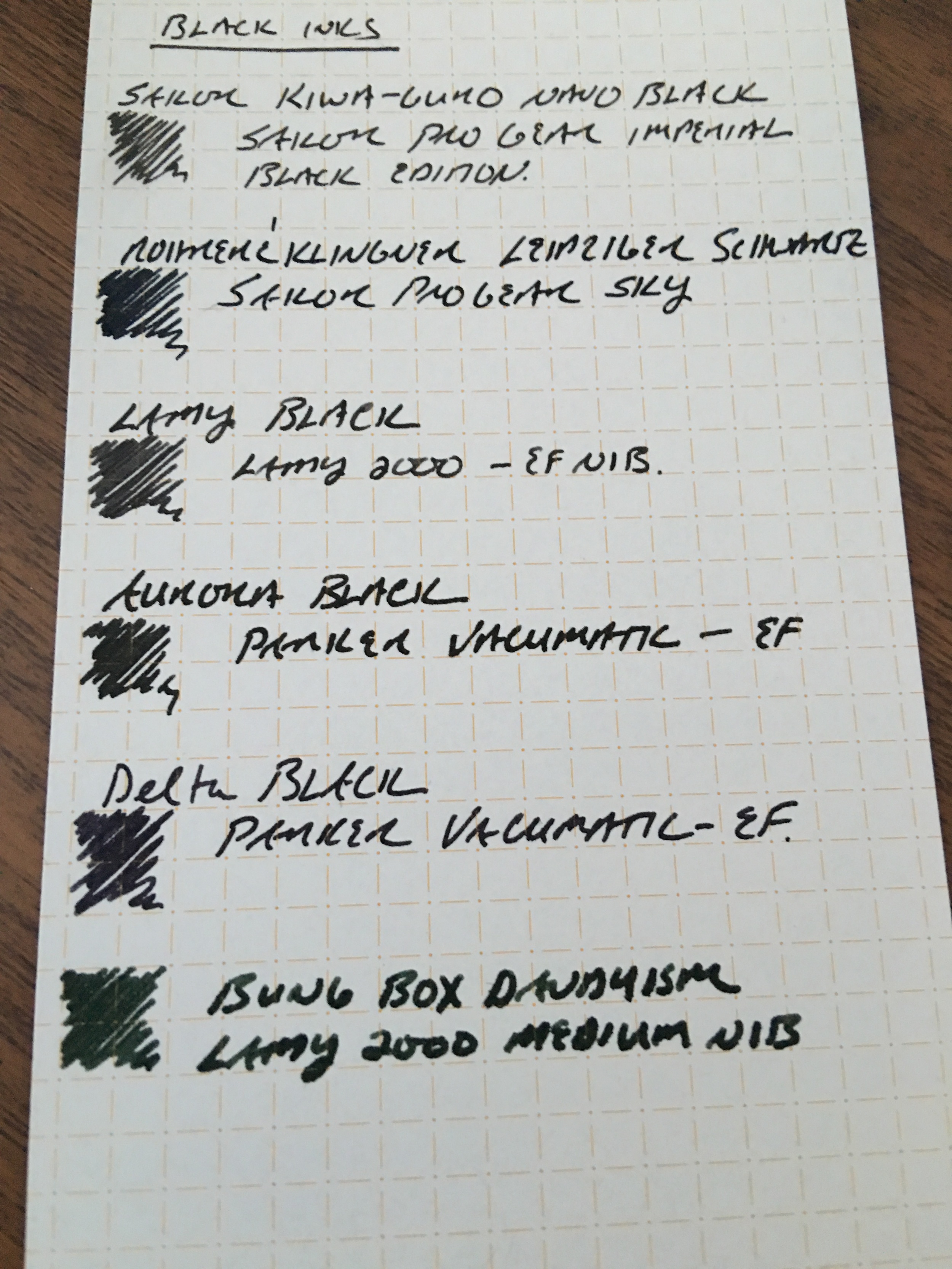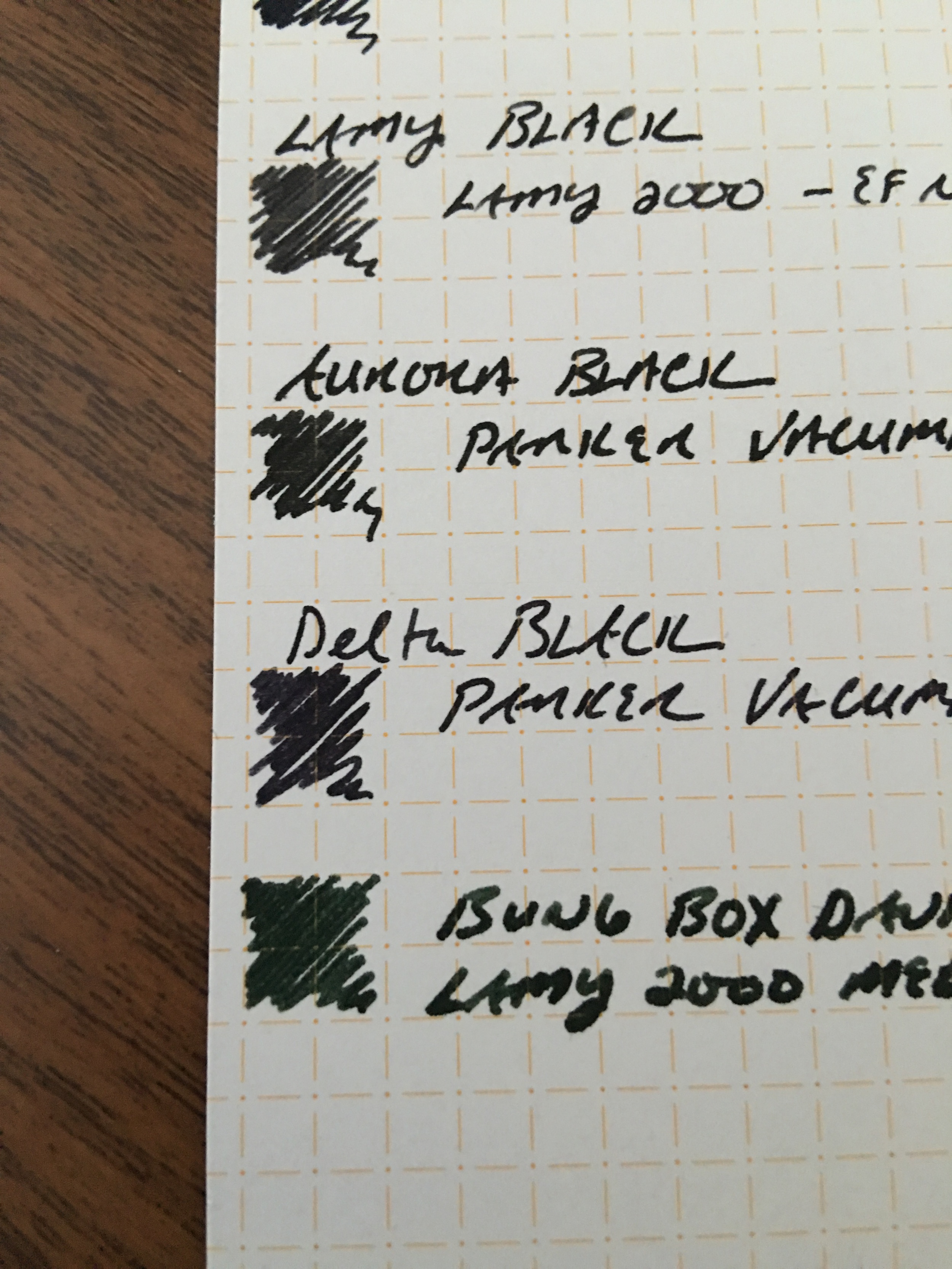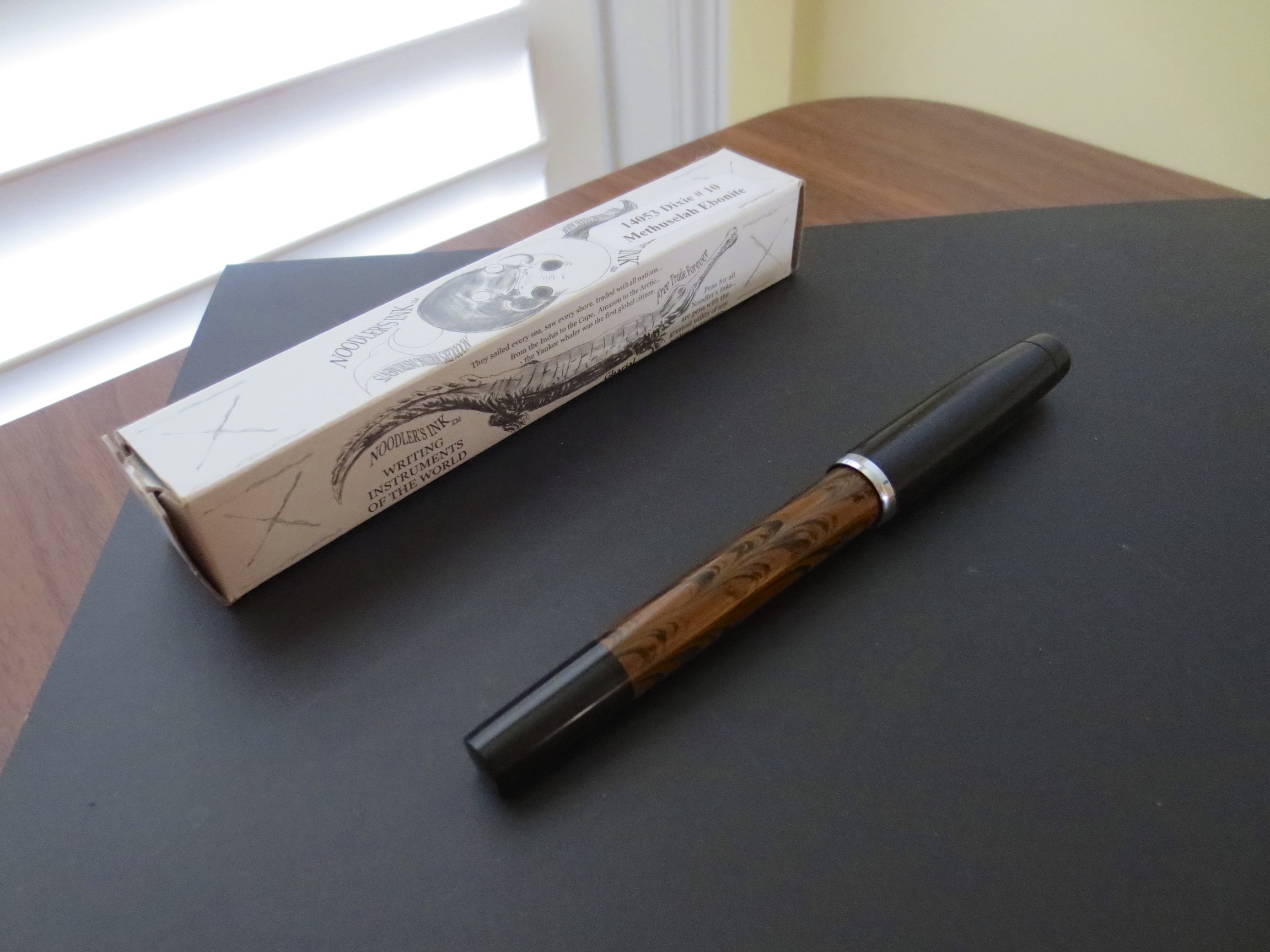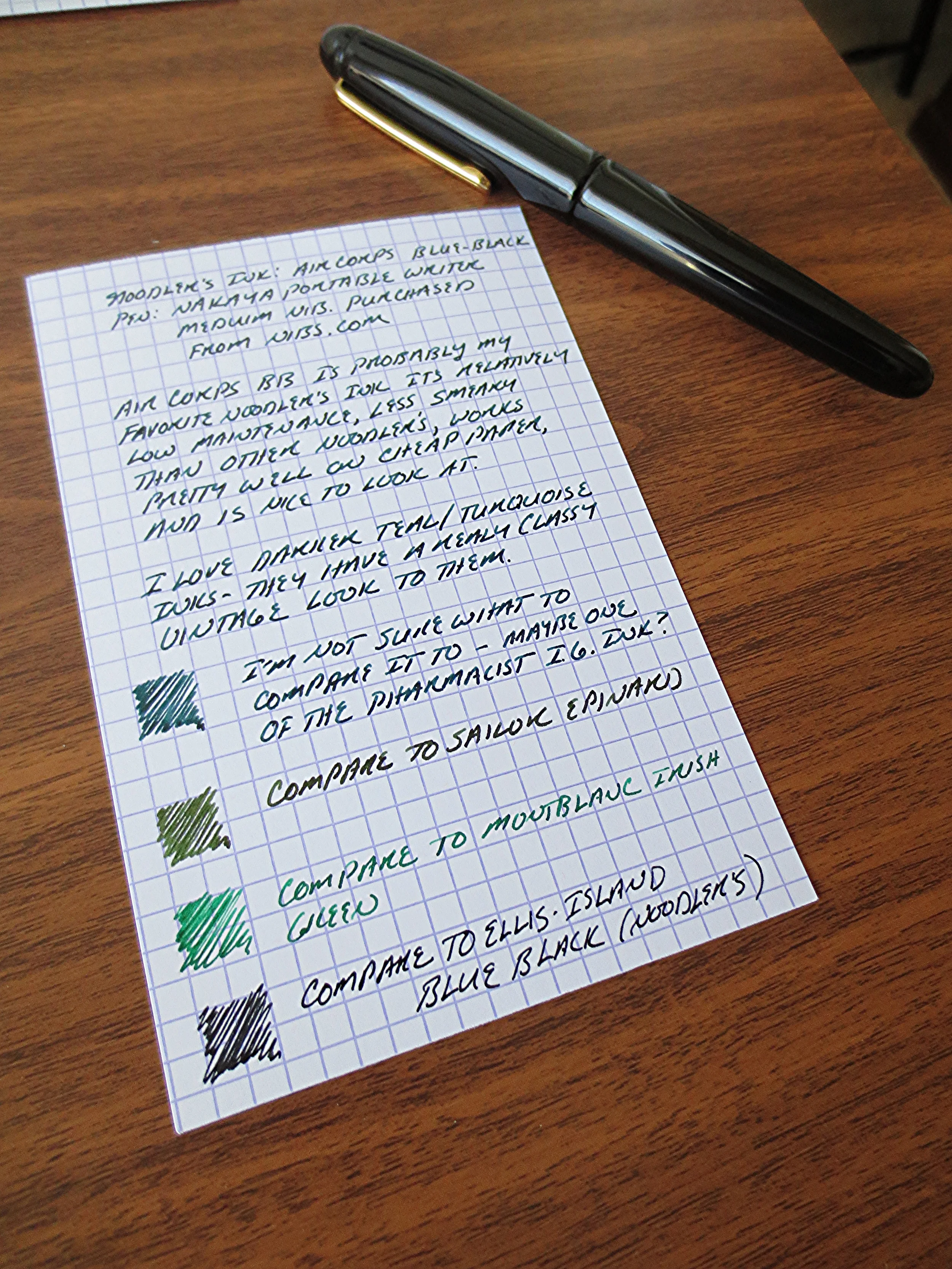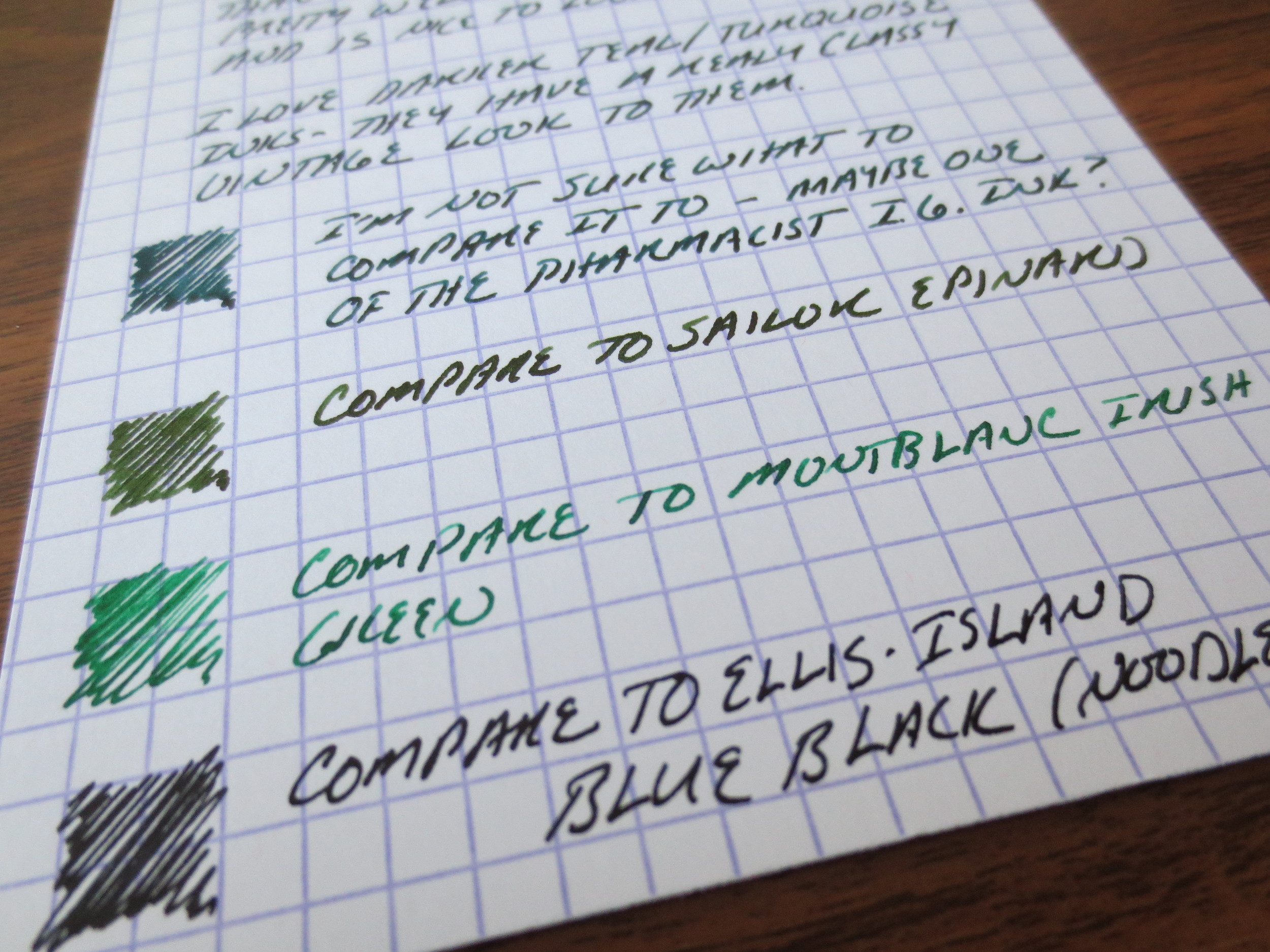I rarely review an individual ink by itself. I tend to prefer to review them in batches of three or more from a particular line or brand because it makes it easier to see whether the line as whole is consistently good or whether certain inks are outliers. Occasionally, however, an ink will surprise me, and I'll give it its own writeup. One of those inks turned out to be Noodler's Blue.
Ink swab on a Col-O-Ring Ink Testing Book.
Noodler's Blue is one of the standard Noodler's colors, meaning that the ink is not waterproof, "bulletproof," lubricating, glow-in-the-dark, etc. It's straight up water-based fountain pen ink, and I found it to be very well behaved, with a reasonable dry time and no smearing. The color is gorgeous - a bright blue with none of the washed-out look that you sometimes get with standard blues.
While Noodler's Blue isn't what I would call a heavy shader, you will probably see a bit of shading and variations of tone and color with a wider nib.
With an ink this vibrant, I expected to have issues with staining. When I was syringe-filling a pen from a sample vial, I spilled a rather significant amount of Noodler's Blue into a white sink. I'm happy to report that the ink cleaned right up with water and a paper towel, and my marriage survived. That said, I currently have this ink loaded into a TWSBI 580 clear demonstrator, so we'll see how easy that pen can be cleaned out after a few weeks.
A Note on Noodler's
Noodler's gets a bad rap in certain corners of the pen community because some of their inks have a tendency to be "high maintenance," meaning that they can exhibit slow dry times, clog and stain pens, and bleed through what should otherwise be fountain pen friendly paper. A few general observations that I try to keep in mind when using Noodler's:
- The brighter, more saturated colors contain high concentrations of dye. These are often beautiful, very unique colors, but be aware that inks with heavy dye loads often have a tendency to smear even after the ink is dry, and can clog a pen if you leave it unattended for too long. I sometimes decant Noodler's Ink into a sample vial and add a couple of drops of water, which dilutes the ink ever so slightly without affecting the color much at all.
- Some Noodler's inks are famous for their "special properties." (i.e., the "bulletproof" inks are permanent, the "eel" series contains added lubricant, the "polar" inks won't freeze, etc.) Those properties, however, require adding chemicals to the ink that may impact the ink's performance in everyday writing situations. The trade-off may not be worth it if you don't have a good use-case for an "eternal" ink or one that doesn't freeze. A great guide to the different Noodler's Inks and their special properties can be found at Goulet Pens.
- Because so many Noodler's Inks are "permanent" or "bulletproof," that necessarily means that they not only are hard to wash out of paper, but also pens (and carpet). Exercise good judgment when deciding which pens to use with permanent ink - your light-colored vintage celluloid collection isn't the best option here.
Where to Buy
You can purchase a bottle of Noodler's Blue at Anderson Pens. One great thing about Noodler's is the value - you get 3 oz. (90ml) of ink for $12.50. A single bottle of Noodler's will last you a long time, especially if you dilute the more saturated colors with a bit of water, as I discussed above. Each of these glass bottles comes filled to the brim, so be careful when uncapping.
Disclaimer: Anderson Pens sent me this ink sample free of charge, for review purposes. Many thanks to the folks at Anderson Pens for sponsoring the blog and making this review possible.
